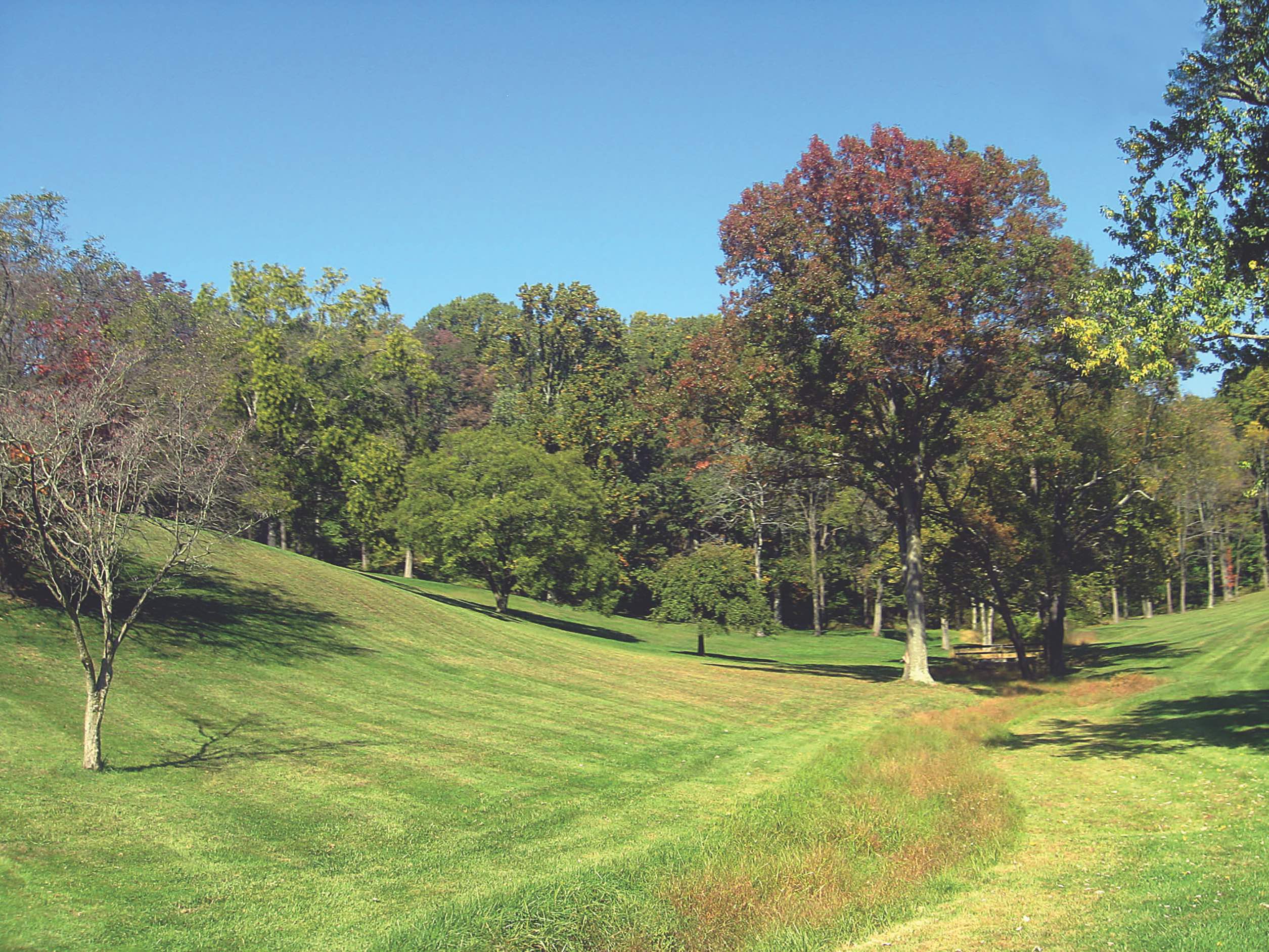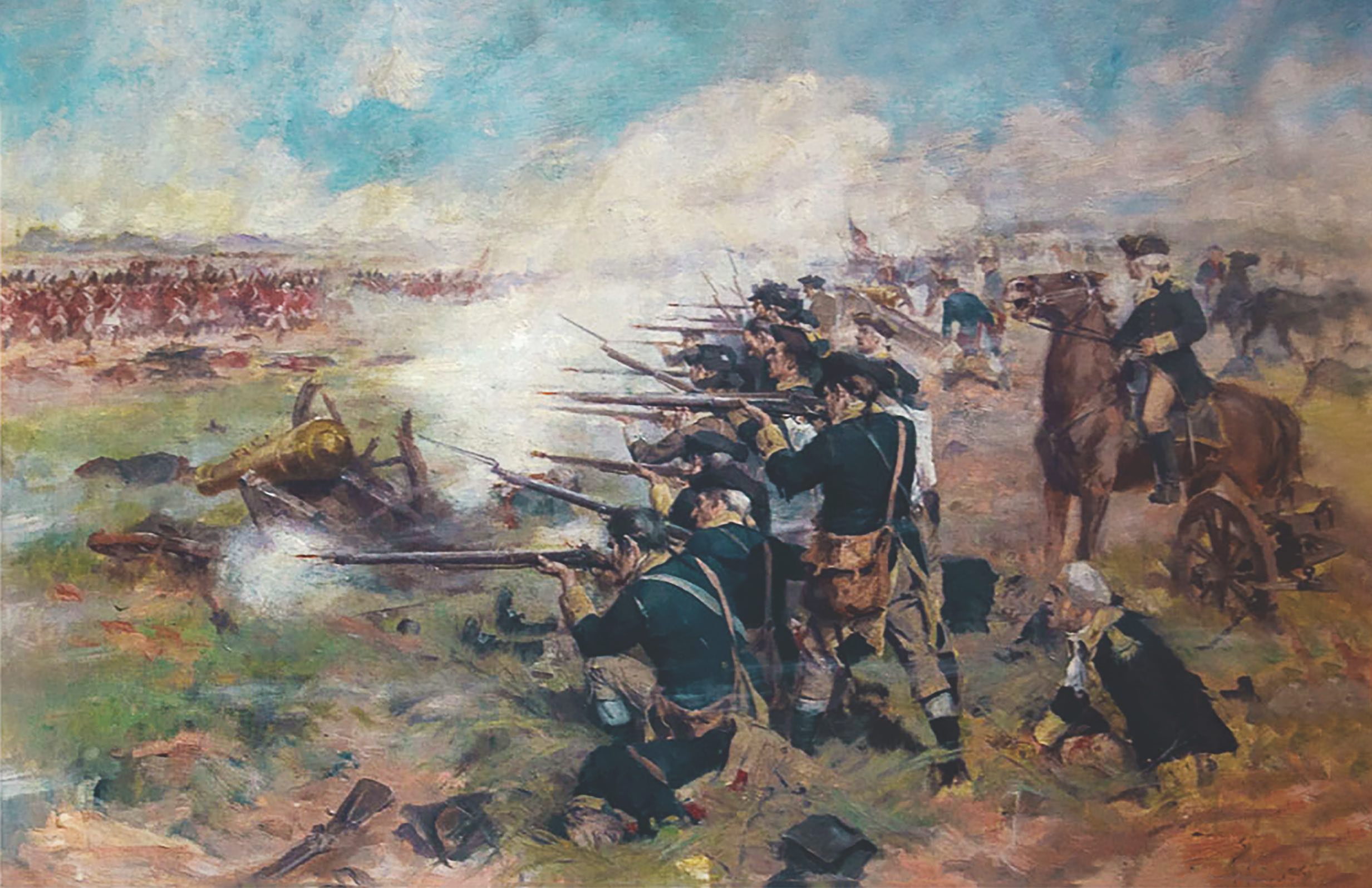The United States of America declared its independence from Great Britain on July 4, 1776, and chose Philadelphia as its capital. Fresh from their major victory in New York City, the British looked to crush the fledgling nation in 1777 with a two-pronged offensive—Maj. Gen. John Burgoyne would advance from Canada to gain control of the Hudson River valley and isolate New England, while Maj. Gen. Sir William Howe, the British commander in North America, would sail from New York to capture Philadelphia.
Howe’s 260-ship fleet approached the U.S. capital from the Chesapeake Bay, landing at present-day Elkton, Md., about 45 miles southwest of Philadelphia, on August 25. As the 17,000-man British army moved north, Gen. George Washington and the residents of Philadelphia were confident they could resist the attack. Scouting the British advance were American light infantry, a mix of Continentals and militia. On September 3 they ambushed the Hessian mercenaries in the British van at Cooch’s Bridge, just south of Newark, Del. Calling up reinforcements, the British drove back the Americans. Days later when Howe pushed north toward the main road between Baltimore and Philadelphia, Washington redeployed his 14,600-man army along the intervening Brandywine River.
On the morning of September 9 Washington positioned his forces to guard the most direct crossing at Chadd’s Ford, as well as Pyle’s Ford to the south, and Buffington’s Ford and Wistar’s Ford to the north. The American commander believed he had all crossings covered and that the nearest unguarded ford was a dozen miles distant—too far to do the British any good. But Howe had better intelligence about the terrain, and his tactical expertise proved decisive. Two days later, on reaching Kennet Square, Pa., he sent a 7,000-man force of mostly Hessian troops under Lt. Gen. Wilhelm von Knyphausen directly east to demonstrate against the waiting Americans at Chadd’s Ford, while he and Maj. Gen. Charles Cornwallis took their 10,000 British troops on a roundabout march north of Wistar’s Ford to cross the river at fords unknown to Washington.
Not for the last time, September 11 would be a disastrous day in American history.

On that day in 1777 fog screened the British march, and Washington still believed Howe’s entire army was en route to Chadd’s Ford. Meanwhile, Howe and Cornwallis took position north of the Americans. Only when the British appeared on his right flank did Washington realize he’d been outmaneuvered. Though surprised, the Americans rallied on nearby high ground. They fought bravely, but at nightfall they retreated north to Chester, leaving behind most of their fieldpieces. Howe’s exhausted men camped on the field and plundered surrounding farms. The Americans suffered an estimated 300 killed, 600 wounded and 400 captured to British losses of 93 killed, 488 wounded and six missing.
Though defeated, the Americans were not demoralized and dismissed the loss largely to poor intelligence. After the battle the opposing armies maneuvered in search of advantages, but over the next two weeks little military action occurred aside from an abortive September 16 skirmish north of Chester known as the Battle of the Clouds and the horrific ambush of an American detachment under Brig. Gen. “Mad Anthony” Wayne at nearby Paoli four days later.
Regardless, it was too late to save Philadelphia. Congress fled west, ultimately to York, while military supplies were moved northeast to Reading. Patriots in the countryside did what they could to supply Washington’s army with food, clothing and reinforcements sent by Congress, but on September 26 Howe marched into the capital unopposed. Philadelphia’s loss was a severe blow to the American cause, not to mention Washington’s prestige. Fortunately for the Patriots, Burgoyne’s defeat at Saratoga, N.Y., a month later, followed by the Franco-American alliance early the next year, forced the British to evacuate Philadelphia in June 1778. Howe was recalled to Britain, and Cornwallis eventually lost the war at Yorktown, Va., in October 1781.
Brandywine Battlefield Park is owned by the Pennsylvania Historical and Museum Commission and operated in partnership with the Brandywine Battlefield Park Associates. Established in 1949, the park encompasses 50 acres, a fraction of the 35,000-acre 1777 battlefield. Thanks to a 2021 National Park Service grant, a land acquisition and preservation plan is in the works. MH
This article appeared in the March 2022 issue of Military History magazine. For more stories, subscribe and visit us on Facebook.





